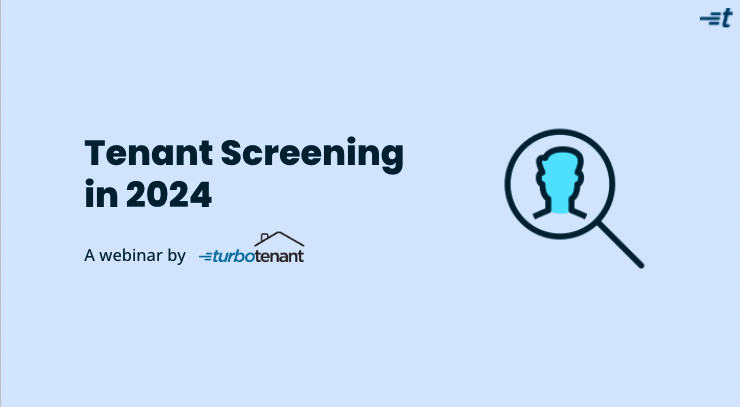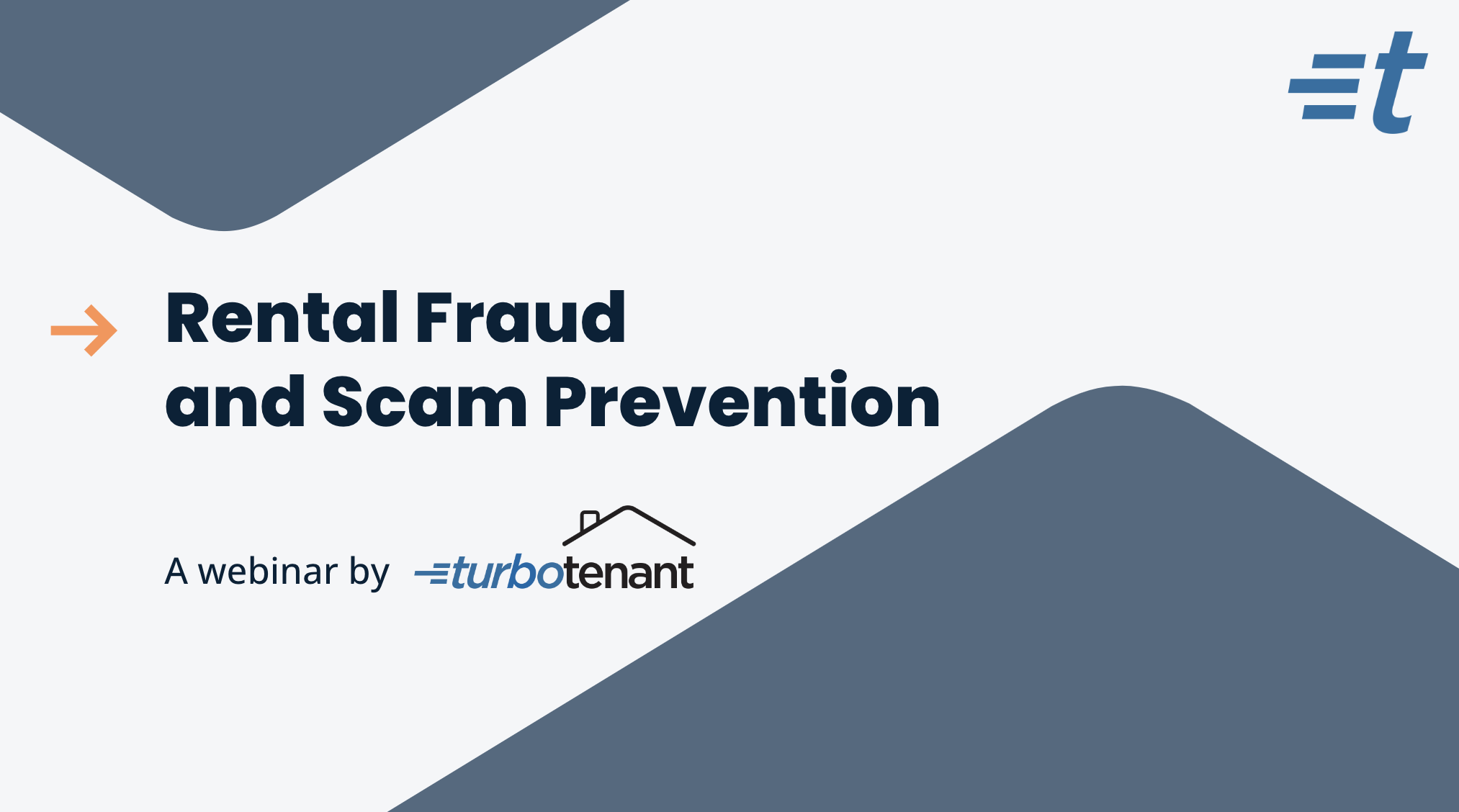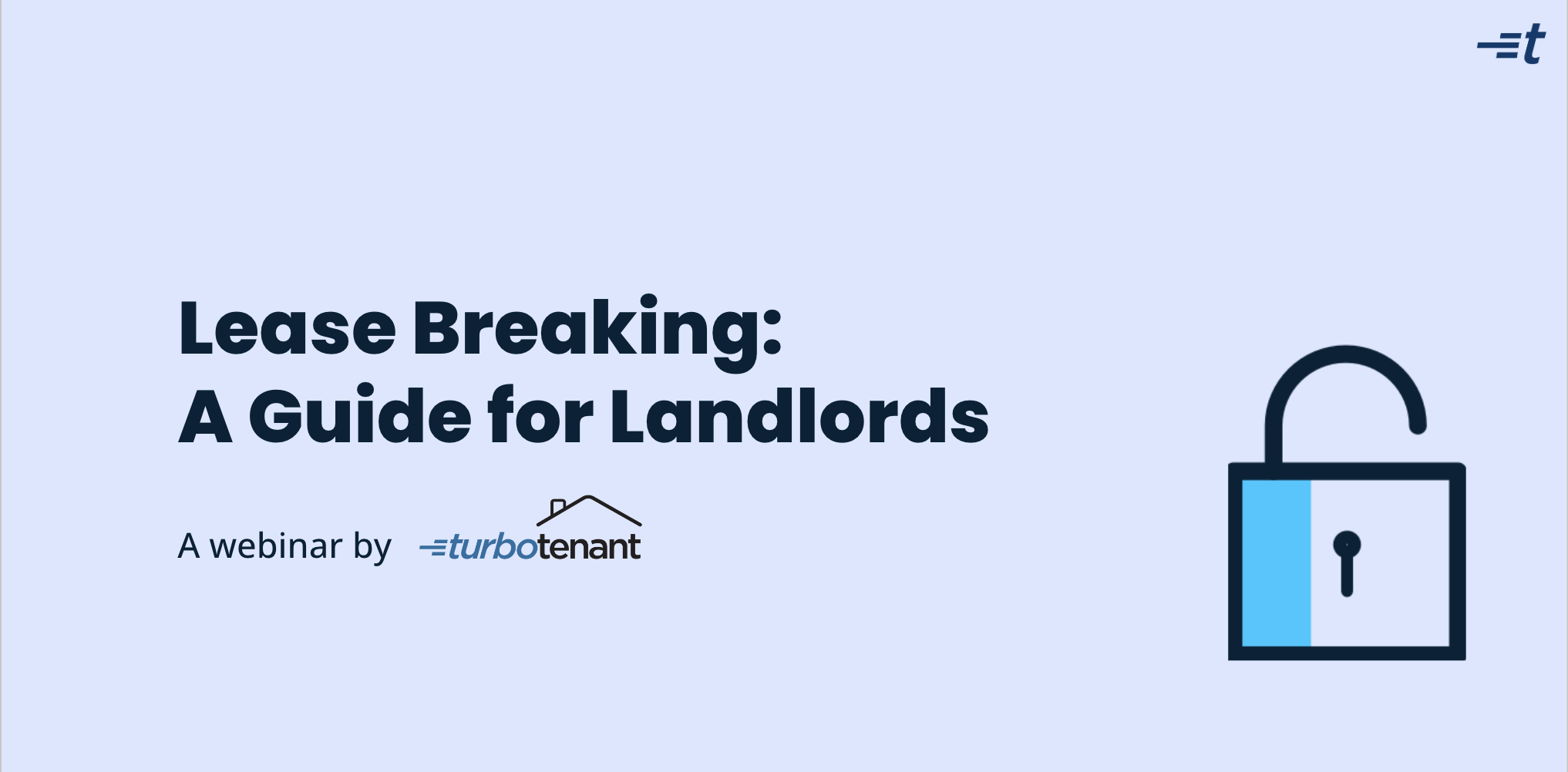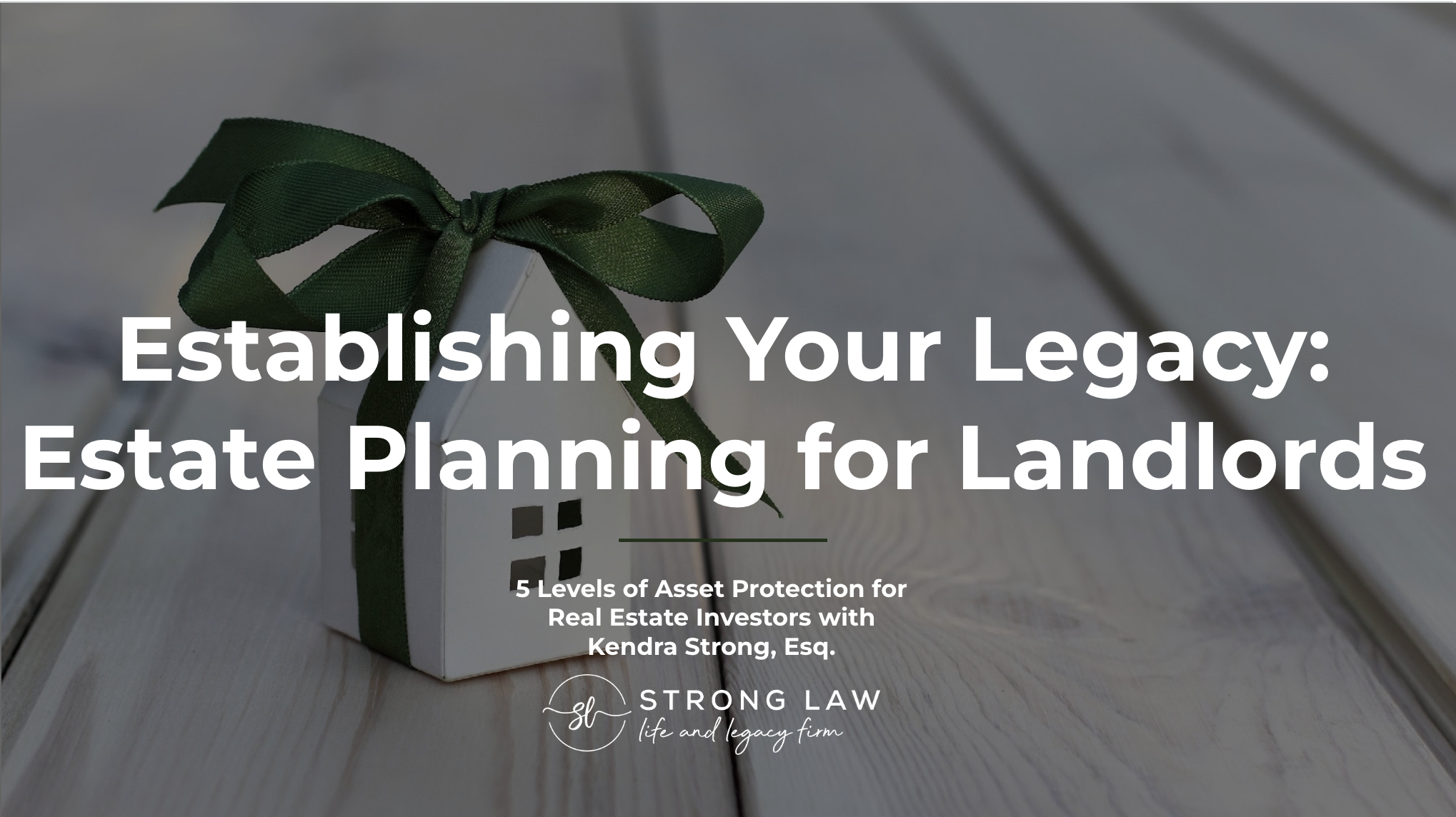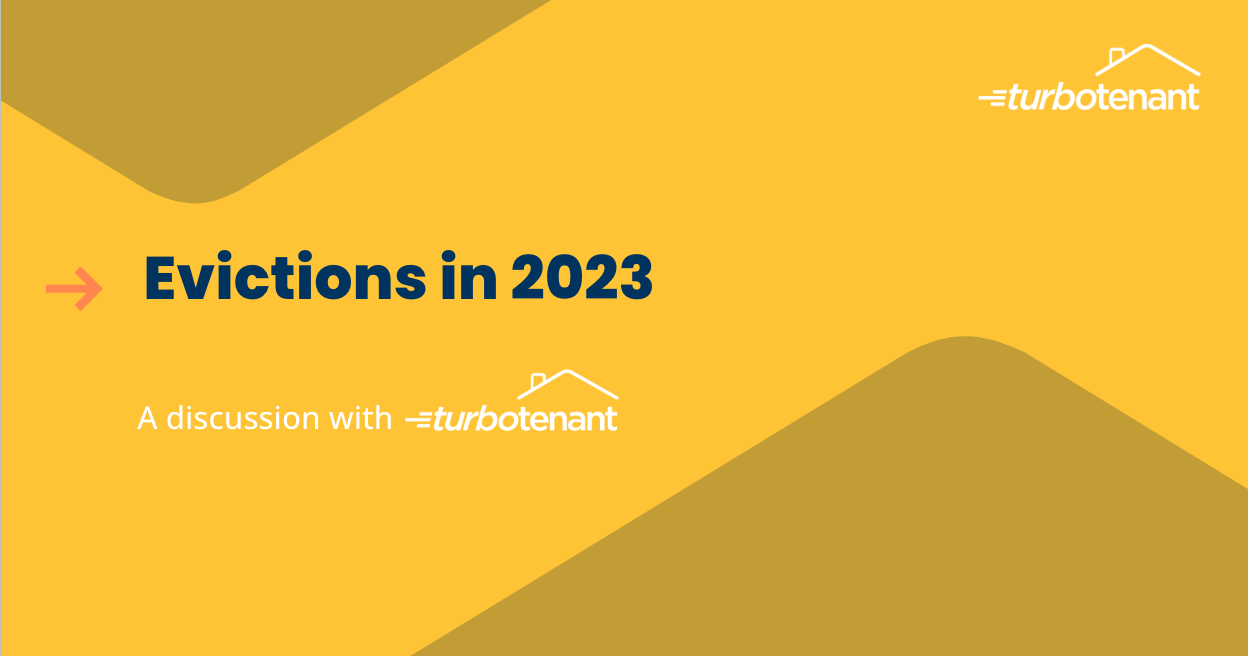Landlord Insurance Webinar
In this webinar, we explore the essential aspects of landlord insurance, covering everything from property damage and loss of rental income to liability protection. You’ll learn how to choose the right insurance to safeguard your investment and understand the benefits of requiring renters insurance for your tenants.
Transcript ▼
Krista Reuther:
Welcome to the you need landlord insurance webinar by TurboTenant and Steadily.
My name is Krista Reuther. I am the senior content marketing writer here at TurboTenant. I am joined today by the incomparable Adam Swearingen. Adam is the senior vice president of growth and partnerships at Steadily. So an important guy, we’re very lucky to have him in the mix.
Adam Swearingen:
Thanks for having me Krista. It’s an honor. We love TurboTenant. He’s a great partner of ours, but we’re really, really excited to share with you guys everything we’re doing at Steadily, but more importantly to help educate on landlord insurance. So again, thanks for having me excited to be here. Wonderful.
Krista Reuther:
Just a few moments before we begin, we’ll be recording this webinar and sending it out to you after the session concludes. Keep an eye out for an email containing that information. Feel free to ask questions in the chat or through the Q&A section, and we’ll address all those questions at the end of our presentation. So make sure you stick around.
Now, let’s start with the most important topic: What is landlord insurance? Also known as rental property insurance, landlord insurance protects you as a landlord when you rent out your property. It’s distinct from homeowners insurance, and we’ll make sure you understand that by the end of today. Homeowners insurance applies only if you reside in the property, while landlord insurance applies when you do not live there. Combining landlord insurance with renters insurance provides comprehensive coverage, and we’ll delve into this as well. As many people get confused about their insurance needs, we’ll cover landlord insurance, renters insurance, homeowners insurance, and then focus on landlord insurance and its coverage.
Landlord insurance is paid by you, the landlord, a crucial point to note. When you have landlord insurance and your renter has renters insurance, which we’ll discuss, you’ll have peace of mind. What about renters insurance? As the name suggests, renters insurance is coverage paid for by your tenant. It safeguards their belongings against accidents, natural disasters, and more. If a tornado damages their residence and possessions, they can get reimbursed. It also covers malicious actions and litigation against the tenant. For instance, if a guest of theirs gets injured on the property and sues, renters insurance can help cover those costs. Additionally, it includes living expenses if the dwelling becomes uninhabitable, allowing them to afford temporary accommodation.
While the tenant pays for renters insurance, landlords also benefit. When renters lack insurance, they might turn to you for help in emergencies. While you’d want to assist as a good landlord, renters insurance enables them to follow proper channels for reimbursement rather than relying solely on you. It also minimizes legal issues by covering medical bills and legal fees in case of injuries on your property. A poll about renters insurance is available, so let’s take a look. What percentage of tenants do you think have renters insurance? Take a moment to provide your answers. It’s intriguing because not all landlords mandate renters insurance, but we strongly suggest giving it a try if you’re not already. We offer renters insurance through TurboTenna if you’re interested. Take your time with the poll; I’ll wait a bit. Okay, let’s conclude the poll and share the results. Look at that—most of you believe that 10% or less have renters insurance, which is interesting. However, the actual answer is 37% as of this year. So, 37% of tenants have renters insurance. Quite fascinating.
Adam Swearingen:
You know, I believe this poll clearly indicates, Krista, that more residents, more tenants need insurance. One crucial step, as you pointed out, is requiring renters insurance through your lease language. This initial move is vital to ensure coverage. Let me provide an example. Sharing examples often aids in understanding insurance concepts, so I’ll walk you through one. Imagine you have a rental home where an electrical shortage leads to a fire. Firefighters arrive and put out the fire, but in doing so, they use a lot of water, causing damage. Let’s say the tenant, Susie, now faces waterlogged furniture and clothes that smell of soot. Unfortunately, Susie doesn’t have renters insurance and holds you, the landlord, responsible for the electrical fire. She asks for $30,000 for new furniture and $5,000 for the Airbnb where she stayed while the home was repaired.
However, your landlord policy doesn’t cover her personal belongings. If she had renters insurance, she could file a claim through her policy, and you wouldn’t need to be involved. Now, let’s fast-forward. After the property is habitable again, Susie throws a housewarming party, and a guest breaks their leg—a sadly common scenario. This time, Susie’s guest is a professional dancer from the Kansas City ballet, with a broken femur in two places. This situation results in a $100,000 claim for medical expenses and lost income. Her renters policy typically covers such liability, but without it, you, the landlord, become the target due to your deeper pockets.
Moving ahead once more, after a lawsuit and stress, Susie decides to light a therapy candle in her room and steps out to Starbucks. Forgetting to blow out the candle, she returns to find half the house in flames. Her renters policy should have covered the damages, but without it, your insurance policy comes into play, potentially raising your deductible and rates. These scenarios, while fictional, mirror real-life events. Many of you probably have similar stories. The key is having adequate coverage to protect everyone involved—Susie, you, and others. Accidents occur, and our goal is to be prepared for them. Absolutely.
Krista Reuther:
Absolutely, those impactful examples highlight the need for both landlord insurance and renters insurance.
Now, let’s shift our attention to homeowners insurance, which is another crucial aspect, although it may not apply as much to landlords. Allow me to delve into this topic further.
A standard homeowners insurance policy covers damage to the building and personal property, along with liability coverage. However, it’s only applicable when you’re residing in the dwelling yourself. If the property serves as your primary residence, homeowners insurance is essential. However, if you’re dealing with a rental unit, you’ll need landlord insurance.
The challenge lies in the fact that these two types of insurance policies often cover similar areas, leading to confusion. It looks like there’s a raised hand—Marilyn, we’ll come back to your question in a moment.
To reiterate, homeowners insurance offers protection against building and personal property damage, as well as liability coverage. Yet, if you’re renting out the property, as I mentioned earlier, landlord insurance is the appropriate choice.
Adam Swearingen:
Yeah, Krista, I’d like to chime in here. There’s a significant number of landlords and investors who still hold homeowners policies. What we’ve observed is that much of this stems from not being aware that they should transition to a landlord policy. Oftentimes, this transition occurs unexpectedly, perhaps overnight, when they seize an opportunity to convert their property into a rental.
Frequently, what we notice is that landlords manage to make do with a homeowners policy when they’re not upfront about renting out the property. It might have started unintentionally, but the issue arises when they file their first claim and the insurance company discovers that the property is being rented out to someone else. In such cases, there’s a possibility that the claim will be denied, and the policy might even be canceled. Needless to say, finding oneself in such a situation is highly undesirable. Absolutely, something to be cautious about.
Krista Reuther:
Absolutely, let’s discuss the purpose of landlord insurance. A landlord insurance policy covers the same elements as a typical homeowners insurance policy, with the addition of a couple of specific features that are essential for landlords. It’s crucial to emphasize: the landlord is responsible for paying for landlord insurance, while the tenant is accountable for renters insurance. This distinction is vital because renters insurance offers protection for the tenant’s belongings, ultimately contributing to the overall well-being.
Furthermore, homeowners insurance is the homeowner’s responsibility, but this is applicable only when they actually reside in the dwelling. This summarizes the threefold framework of property insurance—landlord insurance, renters insurance, and homeowners insurance.
Adam Swearingen:
You know, one important aspect to note is when you’re renting out a part of your main home. Let’s say you live in the home and you’re renting out a portion to a tenant. In this scenario, you require landlord insurance, and your tenant needs renters insurance. It’s worth mentioning that certain homeowners policies might include a home share exclusion. This means that even if you reside in the home and rent out a portion, you might not necessarily have coverage. It’s vital to understand this point.
As you’ll hear us emphasize throughout today, it’s crucial to check with your insurance agent before renting out any part of your property. Ensuring that you have comprehensive coverage is key. The emphasis here is on checking with your agent. Communication and asking questions are essential because there might be exceptions or exclusions you’re not aware of. It’s best to be informed before you find yourself in a situation where coverage is required urgently. Absolutely.
Krista Reuther:
Absolutely, when in doubt, reaching out to your agent is the way to go. They’ll have all the necessary details. Now that we’ve explained the significance of landlord insurance, let’s delve into the benefits it offers.
The main advantage of having landlord insurance is reducing out-of-pocket costs. This not only strengthens your bottom line but also contributes to your peace of mind. Additionally, liability protection shields you from legal or medical fees if a tenant or their guests get injured on your property—as we’ve exemplified earlier. Tenants might seek compensation for various reasons, ranging from physical injuries and fatalities to financial difficulties and emotional distress. With liability coverage, potential expenses for legal or medical fees are covered, providing a safety net against unexpected costs.
Furthermore, rental income protection provides a buffer in case an incident renders your property uninhabitable. Situations like fire, mold, or tornado damage could lead to substantial financial losses. Rental income protection steps in to compensate you for the income you’d otherwise lose due to the property’s unavailability. Usually, this coverage extends for a specified duration, often around 12 months. When obtaining a policy, it’s important to consult your agent to understand the coverage thoroughly, including rental income protection. Adding rental income protection to your policy is highly recommended.
Lastly, it’s worth mentioning certain tenant damage coverage. This coverage addresses two types of tenant-caused damage: accidental and malicious or intentional damage. While some policies include coverage for malicious damage caused by tenants, it’s advisable to confirm this with your agent. Remember that insurance policies don’t cover regular wear and tear. So, tasks like replacing carpets or repainting after each tenant transition wouldn’t typically be covered.
Now, let’s explore what landlord insurance actually covers. A comprehensive policy usually encompasses three primary protections. First is property damage protection. This covers damage to the property caused by natural disasters, vandalism, theft, irresponsible tenants, and other factors that could harm the physical structure. It’s worth noting that not all policies are the same. Basic policies might only cover specific perils such as fire, lightning, smoke, and hail. In contrast, broader policies cover everything except what’s explicitly excluded. However, most policies these days include a COVID-related exclusion.
Next, there’s loss of rental income or rental income protection. This aspect comes into play when your property becomes uninhabitable, as we discussed earlier. It provides temporary reimbursement for rental income, compensating for the income you would’ve received if a tenant could occupy the dwelling. Although it’s a challenging situation, ensuring your financial stability is crucial. An important note is that you can’t charge the insurance company more than what you would’ve earned in rent. If your tenant paid $500 monthly, you can’t suddenly demand $1,000. The reimbursement aligns with the actual rent amount.
Finally, liability coverage, the third significant aspect, covers medical or legal expenses, including lawsuits, bodily injury claims, and settlement costs, if a tenant or visitor sustains injuries on your property.
Beyond these core coverages, there are additional options to enhance your protection. For instance, flood damage insurance covers damage resulting from floods. Keep in mind that flood insurance is often separate from the general policy and needs to be added. Guaranteed income insurance, also known as rent guarantee, covers partial or full rent payments if a tenant can’t pay for a month. This was especially relevant during the peak of the COVID pandemic. Personal property coverage is available for furnished units, protecting your furnishings. This can be adjusted to cover your specific furniture. If your unit is unfurnished, a small amount of personal property coverage can still be carried for appliances and other items.
Now, let’s address what landlord insurance doesn’t cover. Although it offers extensive protection, there are limitations. It doesn’t cover your tenant’s belongings, highlighting the importance of requiring renters insurance. Additionally, as mentioned earlier, normal wear and tear aren’t covered. This refers to damage or deterioration resulting from regular use. Replacing carpets or addressing minor wear and tear that’s expected from ordinary usage won’t typically be covered. Lastly, if the homeowner isn’t renting out any part of their property and lives there, that portion won’t be covered under landlord insurance. In such cases, homeowner’s insurance is appropriate.
I hope this clarifies the details for you. Now, moving on to a more in-depth exploration of the different types of landlord insurance. Adam, take it away.
Adam Swearingen:
Yeah, thanks, Krista. We’re seeing lots of questions, and we’ll be addressing them in our Q&A session. Rest assured, we’ll get to as many questions as possible, right, Krista?
Absolutely, that’s correct. If we can’t cover all the questions during this session, we’ll make sure to circle back and answer each one.
Perfect, thanks. Alright, as Krista mentioned, we’ve covered a lot of ground, providing you with a high-level understanding of different insurance policies—homeowners, landlord, and renters insurance. Now, I’ll take a deeper dive into the various types of landlord policies. First off, when selecting an insurance policy, remember that the coverage you receive depends on the policy type you choose. There are different types of landlord insurance, often referred to as dwelling policies. Let’s delve into the three primary categories: DP1, DP2, and DP3.
Starting with DP1, it’s the most basic policy, covering common occurrences. This policy solely encompasses named perils, which are the most common ones. Claims covered by DP1 are reimbursed at actual cash value (ACV). This is a significant distinction from DP2 and DP3, which I’ll explain shortly. ACV includes depreciation. For instance, consider a roof. If your policy is DP1 and your roof is 10 years old, the claim payout will factor in the depreciation, like a 10k payout for a 20k roof replacement. DP1 tends to be the cheapest option, offering limited coverage. It’s a good choice for hands-on landlords or those who don’t plan to rebuild. However, it might pose challenges with partial losses. If a hailstorm damages the roof, you might not receive enough to cover the full replacement cost.
Moving on to DP2, this policy covers named perils like DP1 but extends coverage to additional events such as burglary damage, frozen pipes, falling objects, and loss of income. The crucial difference is that DP2 payouts are based on replacement cost value. This means the policy covers restoring the dwelling to its original state. For instance, in the previous roof scenario, you’d receive the full 20k replacement cost, minus your deductible. DP2 often includes loss of rents coverage, ensuring you receive rental income while your property is repaired due to covered damage.
Lastly, let’s discuss DP3. It’s the broadest form, functioning as an open peril policy. This means all perils are covered unless specifically excluded. DP3 protects your home’s structure, fair rental value, and typically personal liability. However, like DP1 and DP2, it doesn’t cover your home’s contents. Each option has its purpose, aligning with your investment philosophy and risk tolerance. Talking to your agent is essential to navigate the choices.
Common questions arise about the cost of landlord insurance. According to the Insurance Information Institute, landlord insurance is about 25% pricier than regular homeowner’s insurance. If the average homeowner’s premium is $1,200, a landlord insurance premium would be around $1,500. Keep in mind, the cost depends on coverage type and the insurance company. Factors like location and potential natural disasters also play a role. More comprehensive coverage generally translates to a higher policy cost.
Krista Reuther:
Now, it’s time for our second poll of the webinar. We’re excited to hear your opinions. Among the options provided below, which state do you believe provides the most cost-effective landlord insurance? We’re already seeing quick responses for Idaho. Let’s continue to gather your answers!
Adam Swearingen:
All the states are getting some love here. That’s good.
Krista Reuther:
Indeed, the responses are evening out a bit. Also, it’s important to highlight that landlord insurance is tax deductible as it falls under regular business expenses. Remember to keep your receipts organized so you can provide them to your accountant at the end of the year.
Alright, let’s give it another 10 seconds for those of you who haven’t shared your opinions yet. About half of you have participated thus far. I must say, I was a bit surprised by the answer myself. Let’s see if you find it equally surprising.
Okay, it appears that most of you believe that Idaho offers the most economical landlord insurance. That’s a reasonable assumption, given the potato connection. Maybe that translates to lower insurance costs, right? However, the actual answer is Delaware, where the average cost is just $976. In comparison, Colorado, my home state, takes the lead in high landlord insurance costs, averaging $4,228. It seems like I’ll be embracing a ramen lunch soon. Fascinating findings!
Adam Swearingen:
Alright, moving on. So, one of the next commonly asked questions that follows closely after: “How much does it cost?” is “How can I lower the cost?” Let’s discuss a few strategies.
First and foremost, property maintenance is key. Insurance companies are risk-averse, so maintaining your property to code standards can help reduce your landlord insurance premium. Implement a maintenance routine, keep sidewalks well-maintained, ensure fire escapes are functional, install smoke detectors and carbon monoxide detectors, and maintain well-lit hallways.
Adjusting your deductible can also impact your premium. Opting for a higher deductible means you’re willing to shoulder more of the cost, leading to potentially lower premiums. Safety measures play a significant role. Highlight the security measures you’ve put in place, such as security cameras, efficient lighting systems, and alarms. These efforts can earn you discounts on your insurance rate.
Moreover, some insurance companies offer discounts if you pay your premium in full rather than monthly installments. You might also receive a discount if you use a property manager or are a member of a property management association. These are additional avenues to explore for cost reduction.
Excellent. So, wrapping up here, we’ve covered a lot of ground, and hopefully, this information has empowered you with a better understanding of landlord insurance. Our aim was to provide you with a surface-level overview without diving too deep into the specifics. It’s about arming you with enough knowledge to make informed decisions when selecting the right policy for your property.
Remember to conduct thorough research and, most importantly, ask plenty of questions. Our Steadily agents are experienced and love fielding insightful questions. During your discussions with them, consider asking about additional coverage options based on your location, coverage for both short and long-term rentals, replacement cost versus cash value calculations, and any potential property upgrades that could lower insurance costs.
An essential question to ask is also what’s not included in your landlord insurance coverage. This comprehensive approach is crucial. It’s worth mentioning that while we’ve focused on the basics of landlord insurance for traditional rentals today, we haven’t delved into specialized investments like fix-and-flip properties. If any of you are involved in such ventures, where you renovate older properties for rental or sale, these require distinct coverage.
Ensure you maintain clear communication with your agent to tailor your insurance accordingly. Undoubtedly, having adequate insurance coverage can significantly impact your real estate investment business. Obtain quotes, consult experts, and carry out thorough research, so you can rest easy knowing that your business and assets are well protected.
With that, I believe we’re ready to move on to the Q&A session.
Krista Reuther:
Sure, no problem. Continuing from what Adam mentioned, if you’re interested in Landlord Insurance, our partners at Steadily can provide assistance. I’ll drop the link to this page in the chat. And Marilyn, it seems like you have a question that you’ve been eager to ask. Feel free to type it in the chat, and we’re here to help with whatever you’re curious about. Your engagement is valuable to us.
Adam Swearingen:
And it appears we have Andrew Kim from the Steadily team present, ready to address any questions you might have. Andrew, if you’re ready, feel free to unmute yourself and assist with these inquiries. We’re here to assist!
Andrew:
Sure, sure. Yeah, I figured that’d be a little bit easier than typing everything out and tagging everybody. Let’s take a look.
Okay, so Susan asked earlier if an umbrella policy will cover the needs. To be honest, none of us knows which needs we’re referring to. But basically, the umbrella policy will provide excess liability coverage over the underlying policies. In this case, it would be the landlord insurance properties. So, for example, if your underlying landlord insurance policy has $500,000 of liability coverage, you could get an umbrella policy to provide excess liability over that $500,000, up to $1 million, $2 million, $3 million. There are plenty of other options for excess liability. Depending on how many properties you own and how much liability you’re exposed to, you could purchase additional excess liability coverage.
So, in the event of a lawsuit, the liability would kick in after the underlying limits have been met. There’s another option where you can exclude liability from the landlord insurance policy and then just get a general liability policy. The general liability will be a general $1 million or $2 million, or whatever limit you choose, liability coverage over that property. There are a couple of different ways to get liability and excess liability coverage on your investment properties.
If there are any further questions on that, please let me know. And then, what if your rental is a cottage in your backyard on your property but a separate dwelling, and you’re wondering what is needed? That’s actually a fantastic question, and it will vary based on the company you’re getting quotes from. Some companies offer primary homeowners insurance policies with a home sharing endorsement. This allows you to have your primary residence policy for your living space and states that you’ll be renting out portions of your home or a separate structure on either a short-term or long-term basis. As long as your carrier or company and agent are aware of how the property is being used, they should guide you to the proper policy required.
Moving on, Steven raises a point about mandating tenants to purchase and maintain tenant policies. He’s curious about the legal recourse if a tenant policy cancels and how it impacts the landlord. When insurance agents advise landlords to require tenant insurance, it’s primarily for liability protection for the investor and property owner. Owning the property exposes you to various liabilities, so tenant insurance helps safeguard your investment. While it might not directly lead to eviction, it focuses on protecting your properties in case of unforeseen events.
Carson’s question is about additional insurance for rent default in landlord insurance. There’s a product called rent guarantee, which offers coverage if a tenant defaults on rent. Some agencies, like ours, are in the process of building such products to offer landlords more protection.
Moving on to umbrella insurance, it’s designed to provide excess liability coverage over your property policy. It’s not about covering what landlord policies don’t; it’s about enhancing your coverage. For instance, in a tragic scenario where a tenant passes away and their family sues for more than your underlying policy covers, the umbrella policy would kick in after the underlying limits are met.
Vanessa’s question pertains to policies for houses being rehabbed for future rental. The type of policy depends on the scope of work. Major renovations might require vacant under renovations or builders risk coverage. Minor renovations could fall under vacant under renovations policies. Your agent will guide you based on project details.
Albert inquires about a copy of a PowerPoint. Andrew asks about a tenant damaging walls. It depends on your coverage. Vandalism might be covered, but consider deductible and repair costs. Filing a claim for an amount lower than your deductible isn’t always beneficial, as it leaves a claim history with no payout.
Adam Swearingen:
Certainly, I understand. Just wanted to add a quick note here regarding hung pictures and holes, particularly during the move-out process. This situation is distinct from a tenant causing intentional damage to the property. When addressing this scenario, it’s valuable to review the lease terms and requirements. If the lease states that tenants must return the property in the same condition as move-in, then there’s an opportunity to communicate that responsibility to tenants. If they don’t fulfill this obligation, the cost of repairs can be deducted from their security deposit. This approach is more favorable than filing an insurance claim. As Andrew mentioned, filing a claim can potentially raise your premiums and overall costs. Thank you for raising this point.
Andrew:
Absolutely, you’ve highlighted a crucial aspect. Even if a claim results in a zero payout, it could still lead to increased premiums. This is one of the potential downsides of making a claim. It’s a good practice to discuss your claims options with your agent beforehand. I recommend reaching out to your agent before contacting the insurance company directly. Your agent can provide guidance on the best course of action. Let’s continue discussing your questions.
Adam Swearingen:
I do want to. I’m sorry, I’m sorry to interrupt. There is one question that I think I saw, and I’ll go ahead and address it. It was from Steven, who asked how a landlord can mandate that a tenant purchases and maintains a tenant policy, even if it’s in the lease. If the policy cancels, the landlord doesn’t have much legal recourse. I’ve never seen an eviction court throw out a tenant because they didn’t have tenant insurance per the lease. Just curious.
Yeah, that’s a great question. From a landlord’s perspective, and I’ll provide information, but it’s important to seek advice from legal experts who can guide you best. What I have seen is making it a requirement at move-in. This means having it in your lease that tenants must provide proof of renter’s insurance to receive keys and move in. To further track it, you can list yourself as an additional interest on the policy. This way, you receive notifications if there are any changes to the policy. There are some gaps here because not all insurance companies provide notifications even if you’re listed as additional interest. Adding extra steps, such as requiring proof every quarter or six months, can help. If a tenant fails to provide proof, it could be a violation of the lease, which can be crucial later in an eviction process.
At Steadly, for instance, you could leverage this requirement. You can explain to tenants that to rent the property, they need insurance to cover accidental damage they might cause. They must provide proof of coverage at move-in and every three months to ensure it’s active. Alternatively, they can check out Steadly, a partner we know. They offer policies at competitive rates and will list us as additional interest to meet your requirements. Just throwing that idea out there. Feel free to reach out separately, and we can discuss this further.
Back to you, Andrew.
Krista Reuther:
Absolutely, thank you, Adam.
Andrew:
All right. Albert, as a landlord, can I buy and pay for my tenant’s rent or liability insurance? So, Albert, what I usually refer to is that this can be state-specific and dependent on state guidelines. As far as I’m aware, on the sales side of things, us as agents cannot pay for the policies. However, I haven’t necessarily heard anything about property owners paying for them. Unfortunately, on the sales side of things, that’s the best answer I can provide. I would recommend seeking legal advice for that.
Andrew also asked, how does price depend on square footage? When we run a replacement cost estimate or a reconstruction cost estimate to determine the values needed to rebuild a damaged property back to its original state, each company uses its calculator. It typically takes into account square footage, finishing materials, frame construction type, foundation type, and more. The price varies based on the state and location. For instance, in Colorado, reconstruction costs are much higher, around four to five hundred dollars per square foot, while in Texas, it’s around a hundred to a hundred and twenty dollars per square foot. Price per square footage is greatly influenced by finishes; for instance, plastic laminate countertops versus imported marble from Italy.
Vanessa asked, how do you account for the difference in costs? I’m not entirely sure what you’re referring to, but if you clarify, I’m happy to address it. Similar response for Andrew’s question about why costs vary.
Adam Swearingen:
Okay, so I think we have time for one more question, Andrew. And then…
You know, I believe it’s important for everyone to understand that we’re providing information here, and there will be follow-up discussions. Chris, I can provide more details on that shortly. At Steadily, we’re here to address all these questions and engage with you all to discuss your specific situations.
Andrew:
Thank you. All right. Yes, so Betty J asked, if I own a four-unit building and I live in one unit, do I need a homeowner’s policy for my apartment and a landlord policy for each of the other three?
In that situation, Betty, I highly recommend finding a company that offers the Home Share Endorsement Program. This would allow you to list it as a quadplex or units. Since you primarily reside in one unit and rent out the other three either long-term or short-term, as long as your agent and company are aware of this setup, they should be able to provide you with a policy that aligns with this description. At Steadily, for example, we work with multiple carriers that offer solutions for situations like this.
However, I advise you to check with your agent and review your current policy to ensure it’s accurately written. As we discussed earlier, having the wrong type of policy for your investment property could have significant consequences. To illustrate, having a homeowner’s policy on a property you’re renting out might be considered misrepresentation on the application. In such cases, the insurance company can deny claims due to the tenant occupancy not matching the owner occupancy listed. Having the right policy type is crucial for your protection. Nice.
Krista Reuther:
Okay, I know we’re pretty close to the end of our time here. Thank you all for these fantastic questions. If you have anything else to ask or if there are questions we didn’t address, please use the link we provided in the chat. We’ll drop the link again just to ensure you have it. This link will take you to Steadily, which is one of the best companies for landlord insurance. They’re experts in this field, and most of their agents have five plus years of experience. You can’t go wrong with them.
In case we didn’t get to your questions or you need more detailed information, consider checking out Steadily through that link. Moving forward, once this session concludes, a brief survey will appear. You can use this survey to select the next topic for our webinar. Additionally, it will ask a couple of questions about your experience with this session. We’ll also send you an email containing the link to this recording and the questions that Adam suggested for discussing coverage with your insurance agent.
Thank you all so much for joining us. We’ve truly enjoyed discussing landlord insurance with you. As Adam mentioned, go to Steadily for more coverage and to ensure you’re well-prepared. Andrew, your joke was great. Remember, only share what you’re comfortable with. Thank you for attending, and we appreciate your participation.
Adam Swearingen:
Yeah, thanks for having me, and thank you all for attending. That link Krista shared might say ‘get a quote,’ but if you enter your information, it will connect you with an agent. So, don’t worry about thinking you’re obligated for a quote. By going through the process, you’ll be connected with an agent like Andrew, who can provide assistance and address any questions you have. Fantastic.
Thank you, everyone. Thanks, guys. Have a wonderful day.
Top questions asked by the audience:
Will an umbrella policy cover the needs?
The umbrella policy provides excess liability coverage over the underlying policies. For example, if your landlord insurance policy has $500,000 of liability coverage, you can get an umbrella policy to provide excess liability over that amount.
What if my rental is a cottage in my backyard on my property but a separate dwelling?
It will vary based on the insurance company. Some companies offer primary homeowners insurance policies with a home-sharing endorsement that covers renting out portions of your home or a separate structure.
What is the legal recourse if a tenant policy cancels and how does it impact the landlord?
Requiring tenant insurance primarily protects the landlord’s investment. If a tenant’s policy cancels, it might not directly lead to eviction but helps safeguard the property in case of unforeseen events.
Is there additional insurance for rent default in landlord insurance?
Yes, there’s a product called rent guarantee which offers coverage if a tenant defaults on rent. Some agencies are developing such products to offer landlords more protection.
How does umbrella insurance work in relation to landlord policies?
Umbrella insurance provides excess liability coverage over your property policy. It doesn’t cover what landlord policies don’t but enhances your coverage. For instance, if a tenant’s family sues for more than your underlying policy covers, the umbrella policy would kick in after the underlying limits are met.
What policies are needed for houses being rehabbed for future rental?
The type of policy depends on the scope of work. Major renovations might require vacant under renovations or builders risk coverage. Minor renovations could fall under vacant under renovations policies.
Can a landlord buy and pay for a tenant's rent or liability insurance?
This can be state-specific. Generally, agents cannot pay for the policies, but property owners might be able to. It’s advisable to seek legal advice.
How does the price of landlord insurance depend on square footage?
The price is influenced by factors like square footage, finishing materials, frame construction type, and foundation type. Prices vary based on state and location.
How do you account for the difference in costs?
Costs vary based on factors like state regulations and specific property details. Clarifying specific scenarios can help address this question in more detail.
If I own a four-unit building and live in one unit, do I need a homeowner's policy for my apartment and a landlord policy for each of the other three?
It’s recommended to find a company that offers a Home Share Endorsement Program. This allows you to list it as a quadplex, where you reside in one unit and rent out the others, ensuring the policy aligns with this setup.










